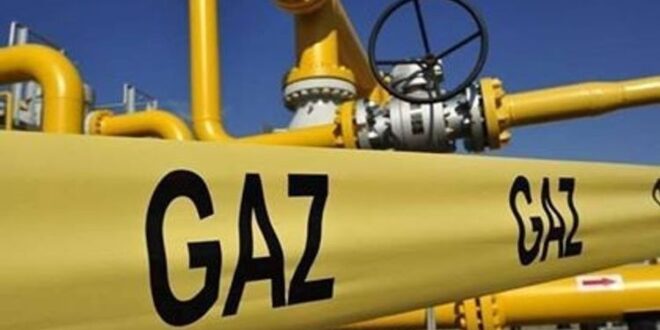Turkmenistan is on the cusp of securing a major new buyer for its natural gas: Iraq.
On October 8, the Turkmen Foreign Ministry reported on a four-day visit to Baghdad by the head of the Turkmen state gas company for meetings revolving around this prospect.
The plan is for Iraq to import up to 10 billion cubic meters of gas from Turkmenistan as part of a five-year, three-way swap deal involving Iran, which lies between those two countries. No financial terms for this proposed arrangement have been disclosed.
The volume of gas under discussion is eye-catching and equates to around a quarter of the amount bought by what is currently Turkmenistan’s most important customer.
The Turkmen authorities are characteristically coy in providing reliable or specific numbers on how much gas it exports every year to China, but the figure likely lies in the ballpark between 35 billion cubic meters and 40 billion cubic meters. That spread has important implications for negotiations with other partners.
The fact that Turkmen government websites uncritically relay Chinese data about gas exports in 2022 having reached a value of $10.25 billion suggests a price of roughly $250-290 per 1,000 cubic meters. Allowing for a deal with Iraq at the higher end of that spectrum sees Turkmenistan generating almost $3 billion in added gas revenues every year.
The apparent swiftness with which the Iraq deal appears to have been put together casts an unflattering light on the heretofore corpse-like progress that has been made in getting the trans-Afghanistan TAPI gas pipeline project off the ground.
More waffle will ensue when a delegation of officials from Pakistan’s Energy Ministry travels to Ashgabat to attend an oil and gas conference taking place from October 25-27. The stakes for advancing dialogue on energy cooperation was spelled out by Pakistan caretaker Prime Minister Anwaar-ul-Haq Kakar.
“The potential of gas in Turkmenistan is very huge and I hope that by the end of the tenure of [the] caretaker government, we will reach a practical conclusion in this regard,” Kakar said in a radio interview that aired on October 8.
That soundbite contains two imponderables. There is no clear idea on the expiry date of Pakistan’s caretaker government, which may look to drag out the holding of fresh elections until as late as February 2024 or beyond. Also, the phrase “practical conclusion” is vague to the point of meaninglessness.
The most recent development of note on the TAPI agenda was the signing of a Pakistan-Turkmenistan joint implementation plan in June. The then-prime minister of Pakistan, Shahbaz Sharif, who oversaw the signing, insisted that he wanted to see the 1,800-kilometer pipeline, which is intended to have a carrying capacity of 33 billion cubic meters of gas per year, built “at the fastest speed.” Pakistani media cited Sharif at the time as saying that this accelerated timetable would be achieved by “optimizing all available resources by all relevant parties.”
On October 4, talks were held in Ashgabat between Turkmen deputy foreign minister Berdyniyaz Myatiev and the World Bank’s regional director for Central Asia, Tatiana Proskuryakova. The Foreign Ministry’s laconic statement on this exchange noted only that the conversation touched on “topical issues on the cooperation agenda” and “priority areas for further cooperation.”
It might be overly hopeful to imagine that the World Bank is feeling emboldened to press Turkmenistan to produce more reliable economic data – an indispensable tool for effective planning.
The World Bank’s colleagues over at the International Monetary Fund did some timid taboo-breaking last month by producing a report that fundamentally questioned the reliability of Turkmen economic figures.
A reminder of the metronomically predictable absurdity of Turkmen statistics arrived at the October 5 Cabinet meeting, where Khojamurad Geldimuradov, the deputy prime minister with the portfolio for economic affairs, claimed that gross domestic product had grown by 6.3 percent over the first nine months of 2023.
How much did the economy grow by over the same period in 2022? Just a whisker less: 6.2 percent. Officials volunteered that same figure in 2021. Only in 2020, the year of COVID, when Turkmenistan sealed its borders and the entire world faced colossal economic headwinds, did statisticians cook up the slightly more modest indicator of 5.8 percent GDP growth. The alternative methodology for calculating GDP advanced by the IMF experts sees Turkmenistan’s economy shrinking not just in 2020, but even 2019.
With the busy season of foreign travel by Turkmenistan’s co-leaders – President Serdar Berdymukhamedov and his father, predecessor and so-called National Leader Gurbanguly Berdymukhamedov – appearing to have entered something of a lull, domestic developments are returning to a familiar pattern.
For Berdymukhamedov senior, this means turning his attention anew to his pet project: the new city of Arkadag. The first phase of construction was formally declared complete in June. (The name Arkadag was chosen, incidentally, because that is the honorific – meaning patron in Turkmen – by which Berdymukhamedov is known). Official accounts of work done talked of the construction of 336 “modern buildings,” including homes, government offices, schools, theaters, clinics, and sports halls.

 Iran Energy News Oil, Gas, Petrochemical and Energy Field Specialized Channel
Iran Energy News Oil, Gas, Petrochemical and Energy Field Specialized Channel



